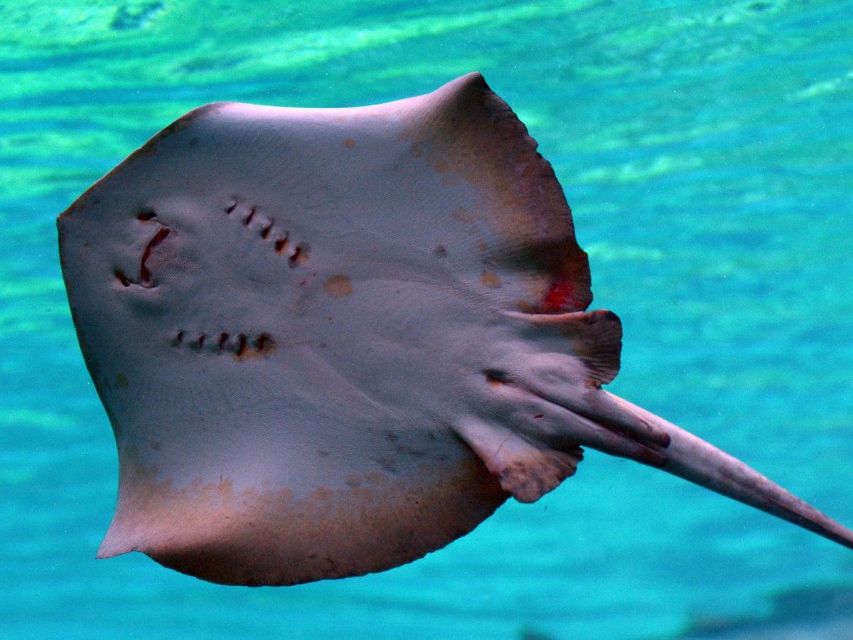De rog als griezel
De kop en vleugels van de draak kunnen we thuisbrengen als we een rog vanaf de onderkant bekijken. Roggen zijn duidelijk zeer geschikt om te bewerken tot iets als een draak. De onderkant van de kop ziet er voor het menselijk oog uit als een gezicht dat ons aanstaart. Wat op ogen lijken, zijn de neusgaten; de echte ogen zitten boven op de kop.
Veel draakjes werden gemaakt door de kop van een rog opwaarts te richten, naar de kijker toe. Dit is zeker ook het geval bij het achttiende-eeuwse draakje van het Naturalis. Vervolgens werden de vleugels van de rog bijgesneden om op drakenvleugels te lijken. Gebeurde dat niet, dan leek het resultaat eerder op een slang, zoals bij Gessner.
Hoe zo’n rog bijgesneden moet worden om de vorm van een draakje te krijgen, wijst zich daarbij redelijk vanzelf. Het drogen is het ingewikkeldst, en Gessner vertelt ons niet hoe dat precies in zijn werk ging. Vis werd sowieso vaak gedroogd om het lang te kunnen bewaren, ofwel in zout, of door het bij het vuur te roken. Ook combinaties van beide methodes, eerst zouten en vervolgens roken, kwamen voor.
Toch zijn niet al deze methodes geschikt om een draakje te maken. Die werden immers niet gepreserveerd om vervolgens opgegeten te worden, maar hebben de eeuwen doorstaan zonder te bederven. Het meest waarschijnlijk is dat dit gedaan is door ze langdurig te zouten om zo al het vocht uit het lichaam te trekken, en ze vervolgens goed te vernissen, zodat ze droog bleven.
Gessner laat veel onduidelijk in zijn instructies, maar de methode voor het maken van een draakje kunnen we er wel ongeveer uit afleiden. Bovendien kunnen we het een en ander leren van de exemplaren van dit soort draakjes die nu nog bestaan.
